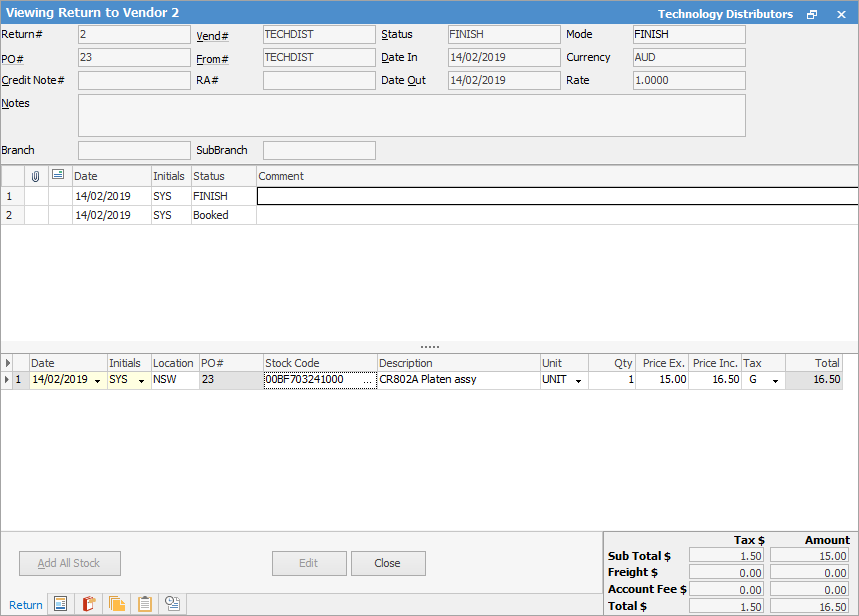

This page outlines and explains the terminology of the Jim2 Return to Vendor (RTV) form. From the RTV form, and the interaction of other default information, accurate and relevant reports can be defined for transmission to the vendor.
As with most businesses, there are times when certain stock needs to be returned to the vendor for various reasons – warranty issues, faulty parts, incorrect quantity ordered, etc. Jim2 has the facility to track stock and allow returning goods to the vendor, and keeping a complete stock control record. RTV is only allowed on stock purchased through Jim2 and have not sold to customers as yet. Jim2 tracks all stock to enable the easiest method for returning stock without having to hunt through purchase orders or vendor invoices to locate the details for the stock return.
|
A return to vendor cannot be used against an expense order – create a negative expense order instead. The quantity is entered as a positive amount, but the dollar value is entered as a negative. See Create an Expense Order, Add Expenses to a Purchase Order and Create a Negative Expense Order. |
The Jim2 Return to Vendor form is divided into the following specific information areas that will provide a complete detailed record of:
▪The RTV details via the Return header
▪The stock information via the return stock grid
▪The totals of the return via the Return footer

|
Some letters in the field names within the header are underlined, eg. Vend#. Using Alt+ the underlined letter will jump to the field beside that heading. |
|
The reverse process to a purchase order is the RTV. In strict FIFO (first-in first-out) fashion stock should not be able to be returned from a purchase until the purchase is finalised. However, there are circumstances where the purchase has been received but need to RTV immediately. |
What to be very clear of is:
Receiving a PO |
Quantity count for stock increases, but COGS, GST and creditors are pending until purchase order is finished. |
Finishing a PO |
COGS, GST and creditors are updated. |
Return to Vendor |
Quantity on hand reduces, GST paid is reversed, creates a creditor credit. |
However, add an RTV against a purchase order that is still on received, but the RTV cannot be finished until the purchase order is also finished.
Restocking fees
Restocking fees can be treated in one of two ways:
▪the value of the credit is reduced, or
▪an expense order is added.
The value of a credit from a vendor can be amended prior to moving the RTV to Finish. This is the most usual way to do it as it mirrors the value of the credit.
Otherwise, finish the RTV for the full value, add an expense order against the vendor for the restocking fee.
Further information
Add a Return to Vendor Against a Different Vendor
Add a Return to Vendor Against Multiple PO's
Add Restocking Fees on a Return to Vendor
Add Stock to a Return to Vendor

